For three-quarters of a century, the iconic Eames Shell Chair has redefined the very act of sitting with its groundbreaking form, proving that, rather than restrict, the right mould can embrace every space, need and individual aspiration.
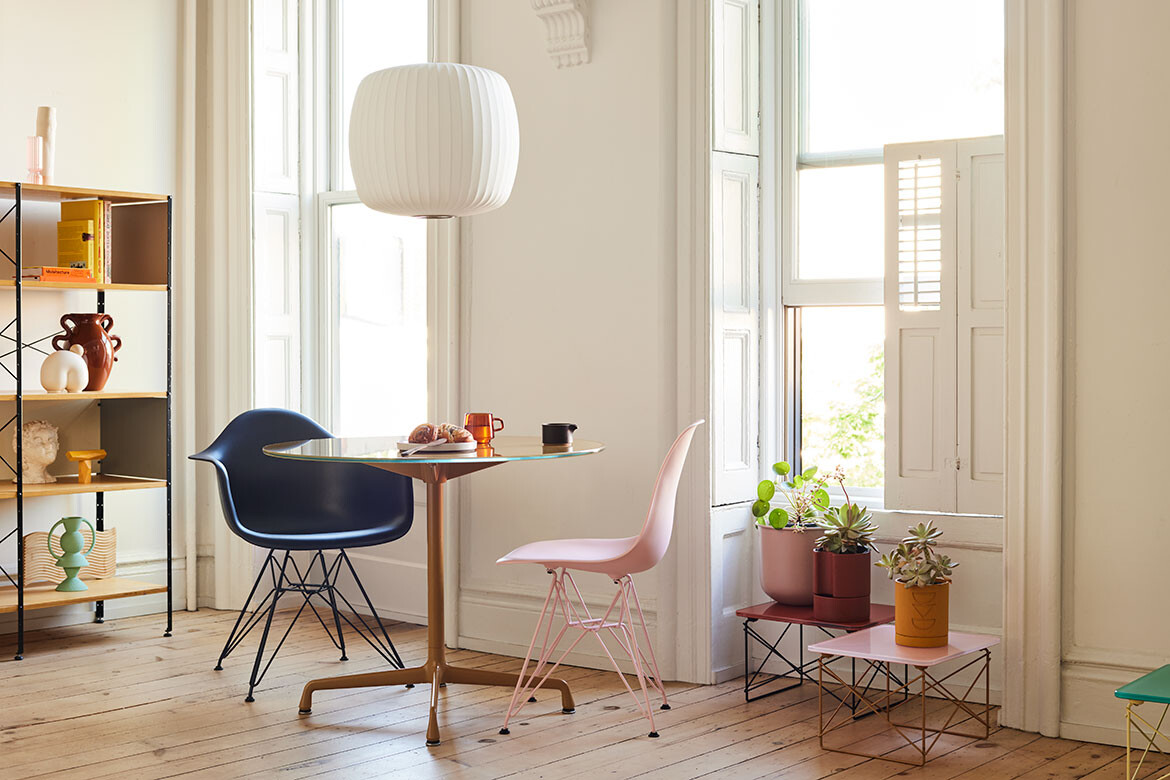
August 4th, 2025
The firm quality of a shell often seems to contradict the welcoming softness of comfort. Similarly, the concept of a mould, forged in its inherent aspiration for efficient uniformity, is frequently synonymous with sweeping, unforgiving homogeneity. We instinctively resist the idea of ‘fitting the mould’ because of its intrinsic demand to curb individuality in order to conform. Unless, that is, it is the mould of the Eames Shell Chair.
In firm defiance of its seemingly unyielding nature, this emblematic design celebrates 75 years of doing precisely the opposite. First released by Herman Miller in 1950, the Eames Shell Chair’s defined form has, for decades, effortlessly adapted to a multitude of environments, users and individual needs, resolutely reaffirming its relevance with unexpected versatility. Here, we look back at the distinct fusion of conceptual clarity and agnostic material inquiry that inspired its pioneering inception.
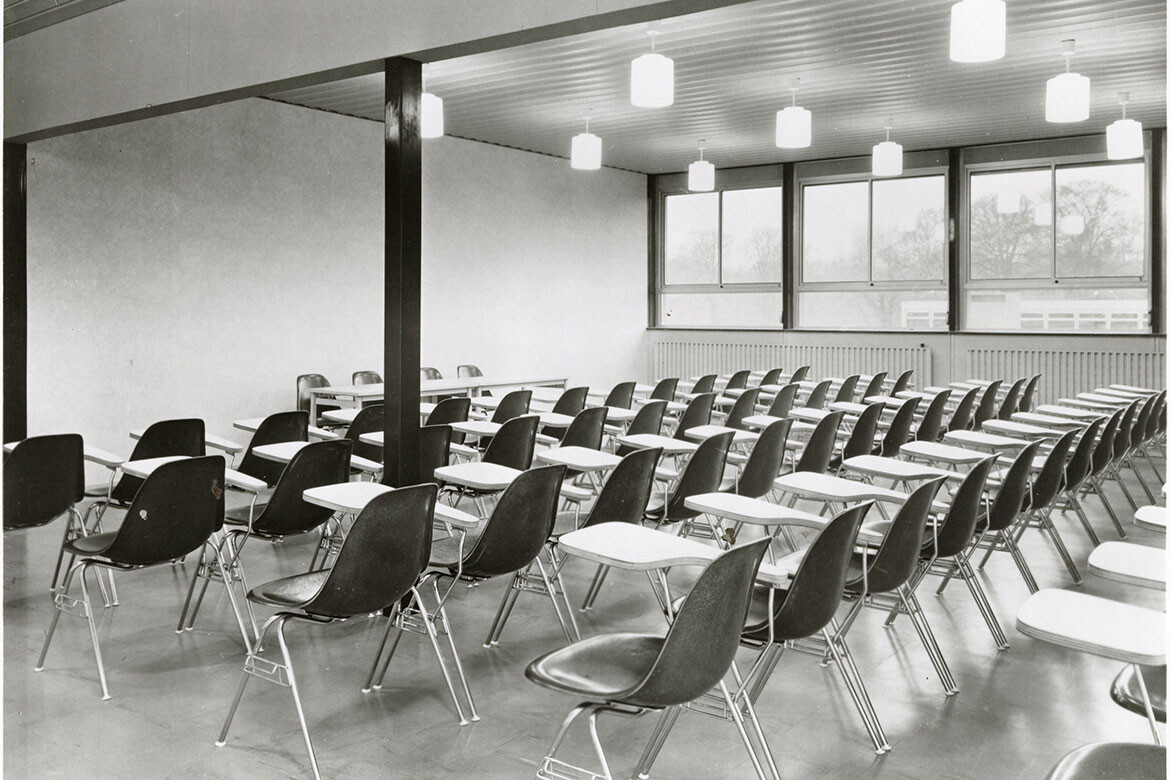
The deceivingly simple contour of the Eames Shell Chair communicates effortless ease. Yet, this compelling, profoundly universal design was meticulously crafted over years of determined experimentation, driven by Charles and Ray Eames’ persistent curiosity, commitment to iterative problem-solving and their unique willingness to embrace failure. Crucially, while the designers were devoted to their mono-shell chair concept, its materiality remained entirely fluid – the one-piece design was never tethered to a preconceived notion of a specific material; instead, it hinged on finding the right medium to articulate the mould with uncompromising precision.
Grounded in this rigid clarity of concept, the design duo first investigated the potential of moulded plywood in their attempt to create a single, biomorphic shell – a process Charles humorously referred to as a 30-year-long flash of inspiration. But when plywood resisted morphing into the singular shape the Eameses envisioned, they pivoted. This consequential change of direction first led them to stamped metal, marking their entry into the Museum of Modern Art’s 1948 International Competition for Low-Cost Furniture Design. Ironically, however, production proved too complex and costly, which directly contradicted the designers’ overarching goal of universality and their ambition to create a chair accessible to all.
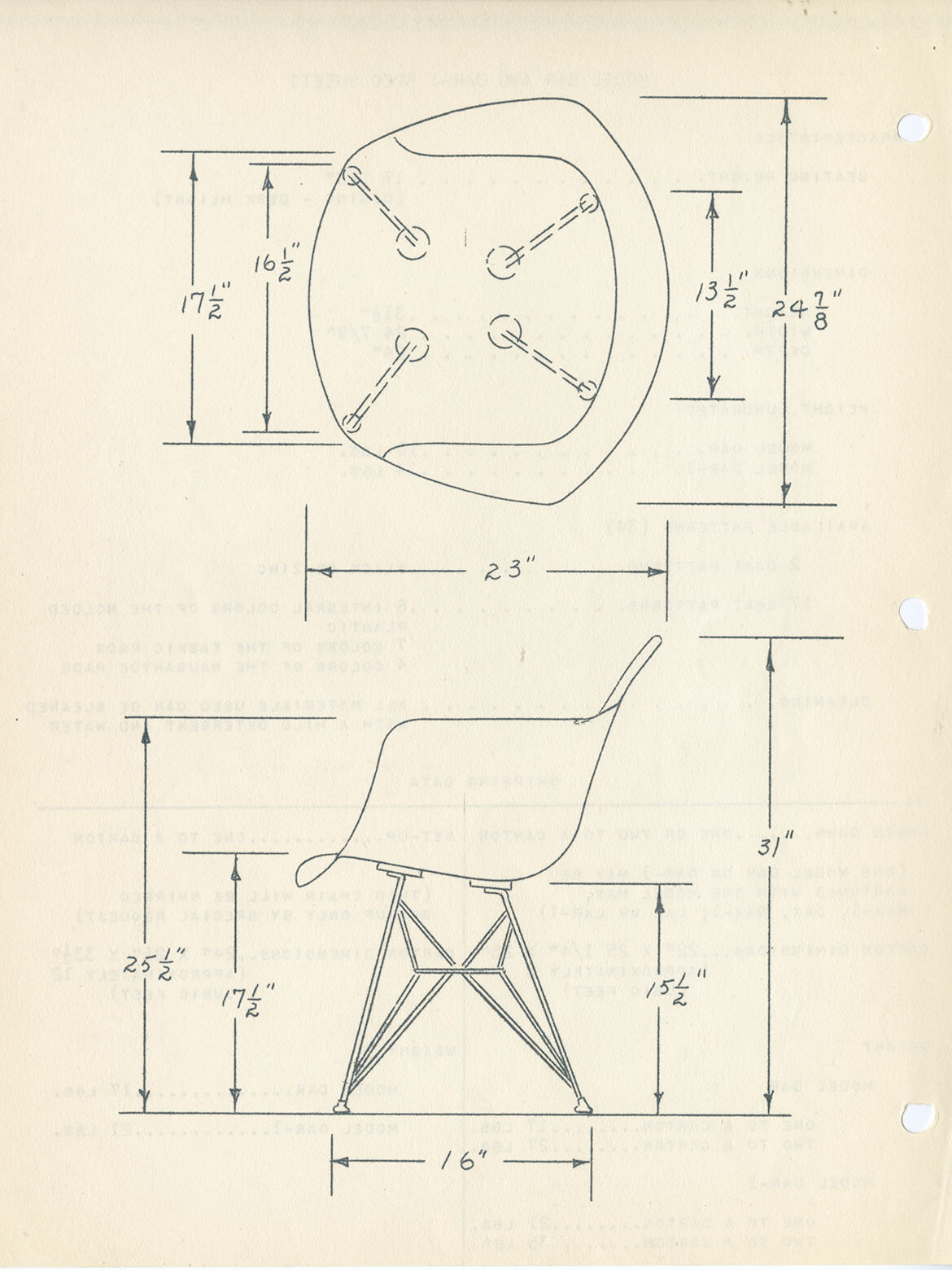
In their characteristic fashion, Charles and Ray repositioned this challenge as a breakthrough design endeavour. As the duo turned to a then-radical material, fibreglass, they weren’t just articulating a chair anymore – they were fundamentally altering the trajectory of furniture design. This revolutionary decision solidified the emerging tradition of material explorations that the Eames Office would foster alongside Herman Miller. Together, they refined the process and, in 1950, unveiled the world’s first mass-produced plastic chair, cementing an investigative ethos that would define their partnership for decades to come.
This relentless pursuit of perfection and the ability to liberate a concept from the limitations of its physical expression continued to shape the Eames Shell Chair’s decades-long evolution, transforming it into a canvas for ongoing material innovation.
When the environmental hazards associated with fibreglass became apparent, the design seamlessly transitioned to polypropylene, only to return to a safer, more sustainable iteration of fibreglass years later, as advancements in technology allowed. Over the decades, the iconic curved contours were also reinterpreted through the precise subtlety of bent wire, revisited in moulded wood, and rearticulated using recycled plastic. Most recently, in 2022, Herman Miller also unveiled shells crafted from 100% post-industrial recycled plastic – a commitment that saves an estimated 122 tons of plastic annually, underscoring the brand’s dedication to both continuous material interrogation and sustainability.
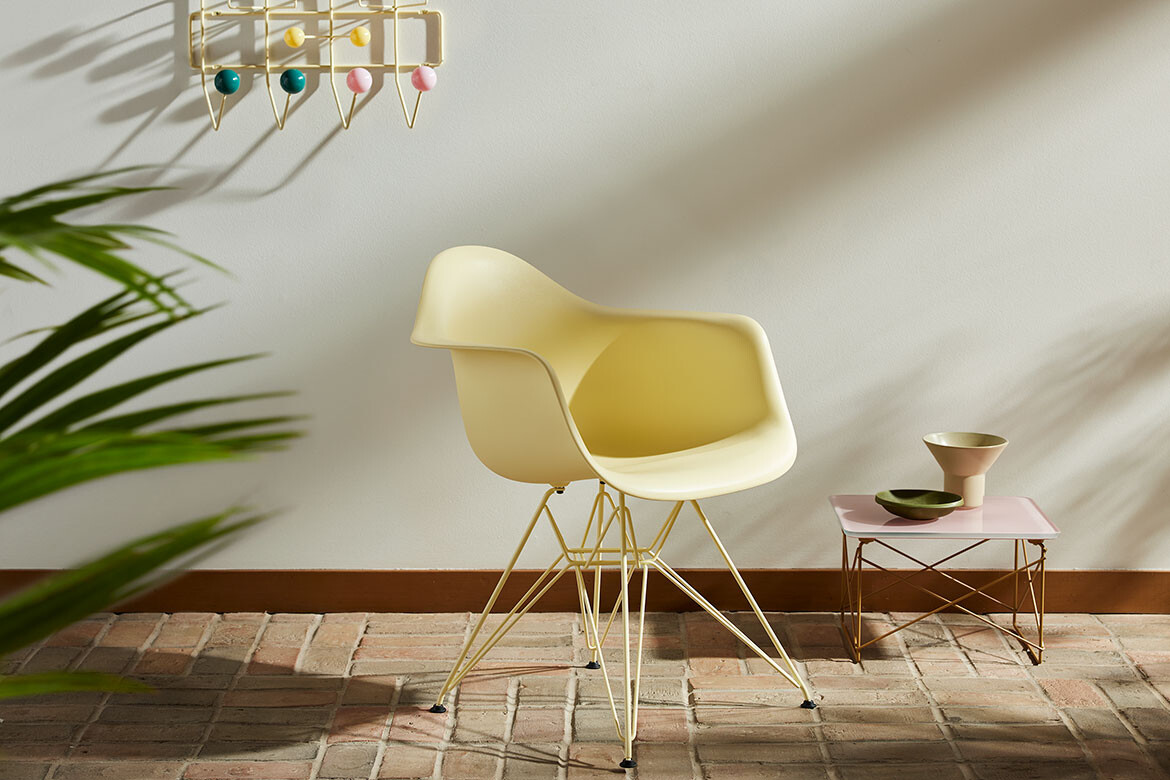
A single shell, a million configurations
This kaleidoscope of materiality, which now forms part of the official collection, isn’t the only signifier of this design’s remarkable adaptability. A distinct palette including lemon yellow, seafoam green, red or greige – colours that brought the Eameses’ signature, joyful dimension to the original launch 75 years ago – has highlighted the multitude of the chair’s expressive personalities through the decades.
This versatility has been further augmented with the introduction of the second size, upholstery, seat pads and the ever-expanding range of base options, which have liberated the rigid shell through a sense of pragmatic vitality. With a choice of classic four-leg and dowel-leg designs, clever stacking options, the whimsical rocker and the distinctive “Eiffel Tower” styles, the seemingly unyielding mould of the seat has astonishingly evolved to now offer over a million possible configurations.
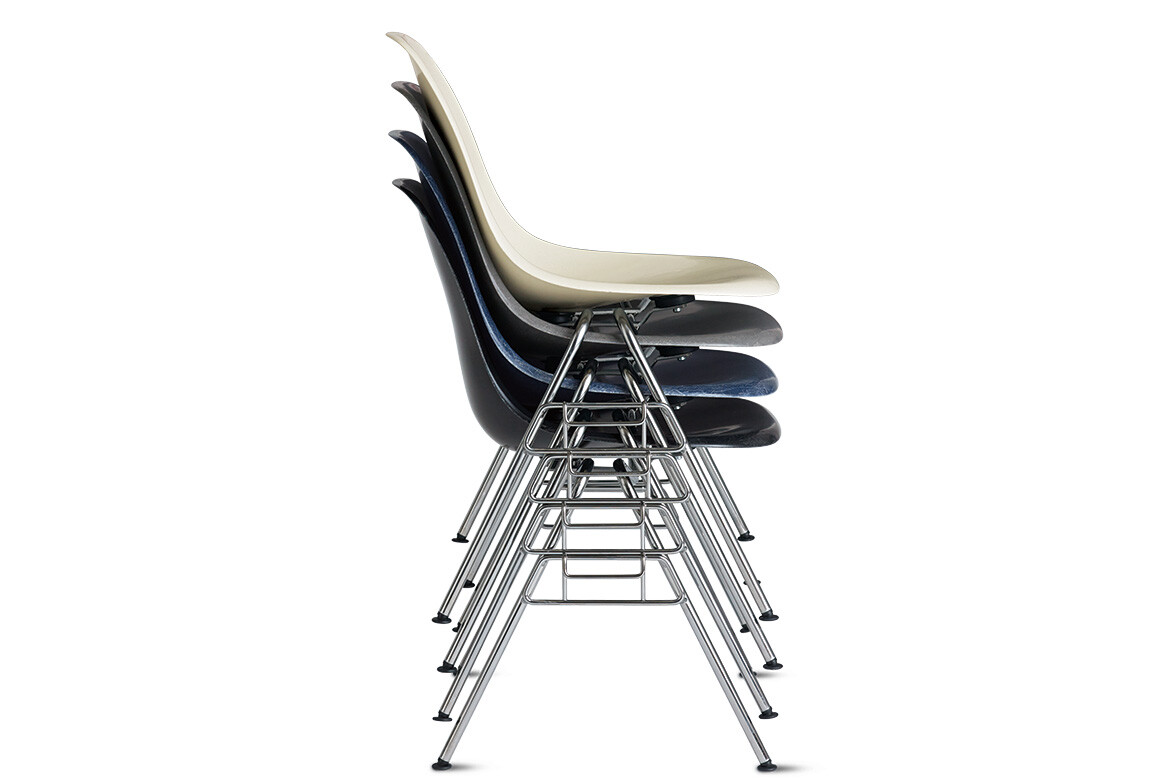
This incredible flexibility has solidified the Eames Shell Chair’s place in every conceivable interior and context since the 1950s. By the 1960s, the chairs filled the dining areas of California’s legendary roadside attraction and one of the earliest authorised Herman Miller retailers, The Nut Tree, and were configured as tandem sling seating at Chicago’s O’Hare International Airport. Over the years, the chair’s seemingly infinite design permutations have entered classrooms, auditoriums, museums, lobbies and even nurseries, and today, this enduring icon continues to be ubiquitously specified in residential dwellings, busy commercial workplaces, lively hospitality settings and celebrated cultural institutions.
With its delightfully familiar form punctuating quaint cafes, cosy living rooms and high-end galleries around the world, the Eames Shell Chair has rearticulated its defined, moulded form into a flexible and dynamic participant of the world we inhabit.
Iconic design, iconic celebration
It is precisely this lasting legacy, ubiquitous presence and exceptional mutability that Herman Miller is inviting the broader design community to celebrate as part of a global, multifaceted tribute to this iconic design.
To highlight the piece’s innate ability to reinvent itself, Herman Miller has commissioned three accomplished artists – Los Angeles’ Benjamin Critton, Luis Mendo in Tokyo and Sydney-based Tete Garcia – to reinterpret this quintessential object through their unique artistic lenses. Immersive commemorative displays will also feature in Herman Miller showrooms and retail stores worldwide – including MillerKnoll showrooms in Australia while also being featured during Saturday Indesign at Living Edge – and an engaging “Shell spotting” social media campaign will highlight archival artifacts, personal spaces and intimate design stories in celebration of the chair’s universal expression.
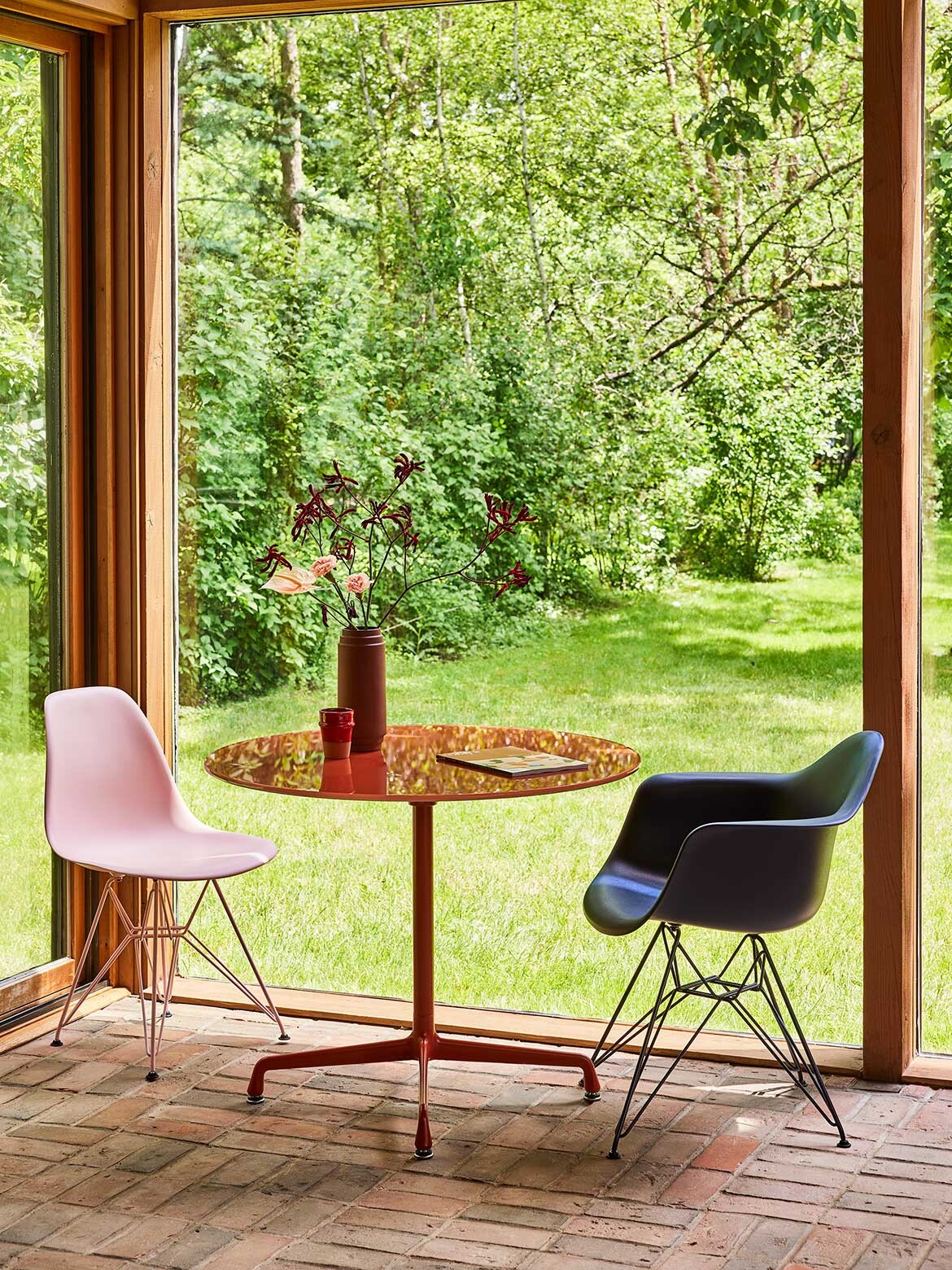
Seventy-five years on, the Eames Shell Chair’s unwavering relevance remains undeniable. Its seemingly inconspicuous form – meticulously distilled into the instantly recognisable, material-agnostic mono-shell through decades of relentless design explorations – is simply impossible to rival.
Anchored in the Eameses’ adventurous ethos of curiosity and problem-solving, the design’s continued relevance eloquently highlights that while this iconic object has never been bound to a single material, its exceptional provenance is woven into every fibre of its form. It is this delightfully versatile design, honed through clarity, courage and perseverance, that has proven beyond all doubt that the right mould doesn’t have to be restrictive. Rather, it can be the starting point for infinite expression as a single, perfect shape that somehow fits us all.
Visit your local MillerKnoll dealer or explore the collection online to discover over a million ways to bring the Eames Shell Chair’s enduring legacy to your next project.
INDESIGN is on instagram
Follow @indesignlive
A searchable and comprehensive guide for specifying leading products and their suppliers
Keep up to date with the latest and greatest from our industry BFF's!

Now cooking and entertaining from his minimalist home kitchen designed around Gaggenau’s refined performance, Chef Wu brings professional craft into a calm and well-composed setting.

Sydney’s newest design concept store, HOW WE LIVE, explores the overlap between home and workplace – with a Surry Hills pop-up from Friday 28th November.

For a closer look behind the creative process, watch this video interview with Sebastian Nash, where he explores the making of King Living’s textile range – from fibre choices to design intent.
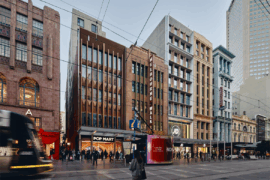
Merging two hotel identities in one landmark development, Hotel Indigo and Holiday Inn Little Collins capture the spirit of Melbourne through Buchan’s narrative-driven design – elevated by GROHE’s signature craftsmanship.

From furniture and homewares to lighting, Dirk du Toit’s Melbourne-based studio Dutoit is built on local manufacturing, material restraint and the belief that longevity is central to sustainable design.
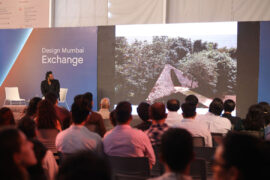
Design Mumbai has concluded its second edition, reinforcing its position as India’s leading international showcase for contemporary design.
The internet never sleeps! Here's the stuff you might have missed

Winners of the 2025 Habitus House of the Year and Editor’s Choice Award respectively, Anthony Gill and Jason Gibney join the podcast to discuss the state of housing in Australia today.

Now cooking and entertaining from his minimalist home kitchen designed around Gaggenau’s refined performance, Chef Wu brings professional craft into a calm and well-composed setting.